How to Grow Crops
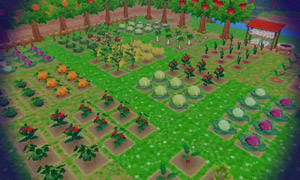
Just like in previous versions of Harvest Moon, you can grow various types of crops in the Lost Valley. When you first start out in the valley, Rowan will walk you through removing the snow from the soil, tilling the ground, planting seeds, and then watering the crops. After that, you are free to plow, plant, and harvest throughout the valley. Crop seeds can be purchased from Sam.
When growing crops, there is a chance the plant will mutate into a new crop based on the species that you planted. A Strawberry could mutate into a White Berry, Spinach can become Savoy Spinach, and so on. There are several factors that will affect how the plant grows:
- Soil Quality
- Crop Health
- Fertilizer
- Elevation
- Season
If all these factors are ideal, a crop has a chance of mutating into a new type of plant. Unfortunately, it isn't a 100% guarantee, which makes it frustrating for many Lost Valley game players who are trying to unlock specific mutations.
Soil Quality
There are four types of soil available in the valley. If you are in Winter, you'll need to shovel the snow away so you can see the type of ground underneath:
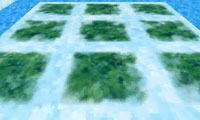
Swampy Soil
Also called marshy, this ground makes a squishy sound when you walk on it.

Grassy Soil
Also called lush or fertile, this is a common soil found by watery areas.
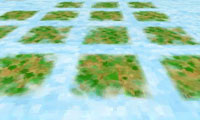
Mixed Soil
A combination of grassy and dry, it is sometimes referred to as patchy soil.

Dry Soil
Ground that is far from water will be barren, yet will still support crop growth.
The farther you are from a source of water, the drier the soil will be. This means that since you can control the flow of water in the valley, you control the soil quality throughout the valley. Next to the waterway edges the soil will be grassy, then farther out it will become mixed, and then dry. If you're trying to make swampy soil, the ground should be surrounded by water on two or more sides. Soil can change throughout the season based on how much precipitation the ground receives (e.g., your soil may be dry at first, but changes to mixed because you had a lot of rainy days).
The type of soil you choose to plant on will not affect the number of days it takes for a crop to mature, but mutations will trigger when planted on specific soil. For example, planting an Onion Seed on grassy soil during Spring will just grow a normal Onion, but planting the same seed on dry soil might result in a Scallion.
Crop Health
When you plant crops, the game assigns a hidden health value to each plant. As long as this health value remains positive the plant will grow to maturity. If the health of the plant is high enough, it may mutate into a new type of crop. If you've ever discovered that your plants randomly die in the middle of the season, it is because this hidden health value has dropped to zero.
You can maintain a crop's health by watering the crops frequently. Watering won't increase a plant's health, but it will prevent crop health from decreasing. Once the soil your crops are planted on dries out, and if you don't water the dried soil within a certain time window, the dryness will have a negative impact on crop health:
| Swampy Soil | Grassy Soil | Mixed Soil | Dry Soil | |
|---|---|---|---|---|
| Sunny weather | 38 hours | 24 hours | 22 hours | 20 hours |
| Cloudy or Foggy | 40 hours | 28 hours | 26 hours | 24 hours |
| Hot (Summer only) | 23 hours | 18 hours | 15 hours | 12 hours |
For example, if you planted a crop on grassy soil and the soil dried out on a sunny day, then you have up to 24 in-game hours to water that plant before the crop becomes dehydrated and loses health. As long as you water within the time frame, the plant will retain its health.
Watering frequently will help to increase your chances of discovering crop mutations. If the plant's health drops below the minimum health points it needs to be able to mutate, then you will just receive a normal crop when the plant matures. Many players mistakenly water their crops every other in-game day because it doesn't affect the maturity rate of the crop, but it does affect the chance of crop mutation if a plant isn't watered within a specified number of hours after its soil dries out.
Even though bad weather storms will water all of your crops, they also decrease crop health. These can happen in Summer (hurricanes), Fall (thunderstorms), and Winter (snow blizzards). You can influence the weather by saving your game before midnight each day. If the weather the next day isn't to your liking, then reload your game and go back to bed. You might end up with different weather than before. If you saved your game after midnight, then you can't change your next day's weather. (Note that some players experience specific crop mutations during stormy weather, so they aren't always a hazard that you have to avoid.)
Fertilizer
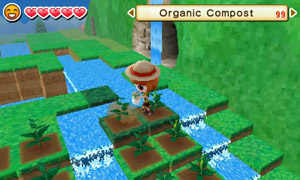
Applying fertilizer will have a positive impact on crop health. Fertilizer can be purchased directly from Sam or made using your Fertilizer Bin. Sam will sell the low-level fertilizers, while high-level fertilizers will have to be crafted by combining specific quantities of ingredients. As you complete requests from April, you will unlock new types of crop fertilizer and the corresponding recipes for your Fertilizer Bin.
Fertilizer can be added to a plant while its soil is wet. When contextual menu pops up with "Fertilize," press the A Button to add it. If you are carrying around multiple types of fertilizer in your bag, you can select which fertilizer to use. Pressing Left or Right will rotate through the variety of bags you have on hand.
It is a good idea to apply fertilizer to your crops after you've experienced a stormy weather day. This will help to restore some of the health that the plant lost due to bad weather damage. Having too many bad weather storms while a crop is maturing, and not doing anything to counteract the damage, can result in dead crops.
Rowan the Harvest Sprite acts like a free super fertilizer. Asking for his help during available weekdays will send him out to your fields, where he'll positively affect the crops and help with mutations. The more Chemistry he has, the better the results. You can increase his Chemistry level by talking to him while he is working in your fields.
Elevation
There are 31 levels of land upon which you can plant crops. You can dig downwards to reach lower elevations and fill dirt to increase land height. If you run out of soil to use, Sam sells it for 10 G per bag.
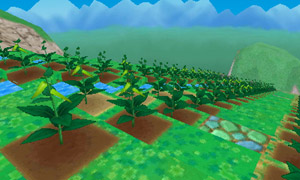
You can get a general idea of the level you're at by comparing its elevation to other static objects in the game:
- The entrance to the Goddess Spring is at level 31.
- The path to your farm house is at level 20, often call House Elevation (HE).
- The stream that runs through the valley is at level 10, and referred to as Water Level (WL). The entrance to Moon Valley is also at level 10.
- The entrance to the Underworld Kingdom is at level 0, although the doorway is large enough that you can squeeze through it if you happen to be at elevation level 1.
The level you plant at will determine the crop's growth rate. Most crops have a specific elevation that it will grow the fastest. Planting higher or lower from that preferred elevation will increase the crop's growth rate. Sometimes it is only by a single day, but sometimes it a several-day difference just for one level change in elevation.
Now, most crops have a preferred elevation, but there are some that will grow at the same speed no matter what level you grow them on. Crops from the celery, potato, and carrot families do not have a preferred elevation. These crops will grow the same no matter what level you plant them on. Also, most of these crops will not mature if you plant them lower than level 5. Flowers grow this way too.
The elevation will affect crop mutations, since growing within a certain level range can determine if a crop has the potential to mutate. For example, planting Hot Peppers in the right season and on the proper soil can potentially produce Jalapenos if the crop is planted between level 10 and level 24. If you plant Hot Peppers on level 25 or higher, you'll never grow Jalapenos; likewise, growing the crop from level 9 and lower will not result in a mutation.
Season

While crops are not season specific in Lost Valley, they do have a seasonal preference. Each crop has a season when it can grow into a great version of itself. Great-quality crops will sell for more money than the normal version, and you don't have to do anything other than plant the crop during its preferred season. The great crop will look identical to the not-great crop when looking at it in your field. Once you pick the crop and review it in your bag, you'll see the "Great" label attached to its name.
Adding fertilizer to a crop can increase its chances of becoming great when growing in its preferred season.
For crops that produce all season long (Strawberry, Tomato, Corn, etc.), once a plant has started to produce great-quality products, it will continue to do so until the plant wilts or you cut it down. This may be beneficial if you're trying to earn a lot of money, but this isn't useful if you're trying to discover crop mutations, as that's one less plant that could potentially mutate.
The speed at which the crop matures will be the same in every season, as growth rate is determined by the elevation that the crop is planted on and not the season in which you plant it.
Crops can mutate into different varieties when grown in different seasons. For example, Corn can mutate into either Fodder Corn or Yellow Corn when grown during the Summer season, depending on the soil that you plant the Corn on.